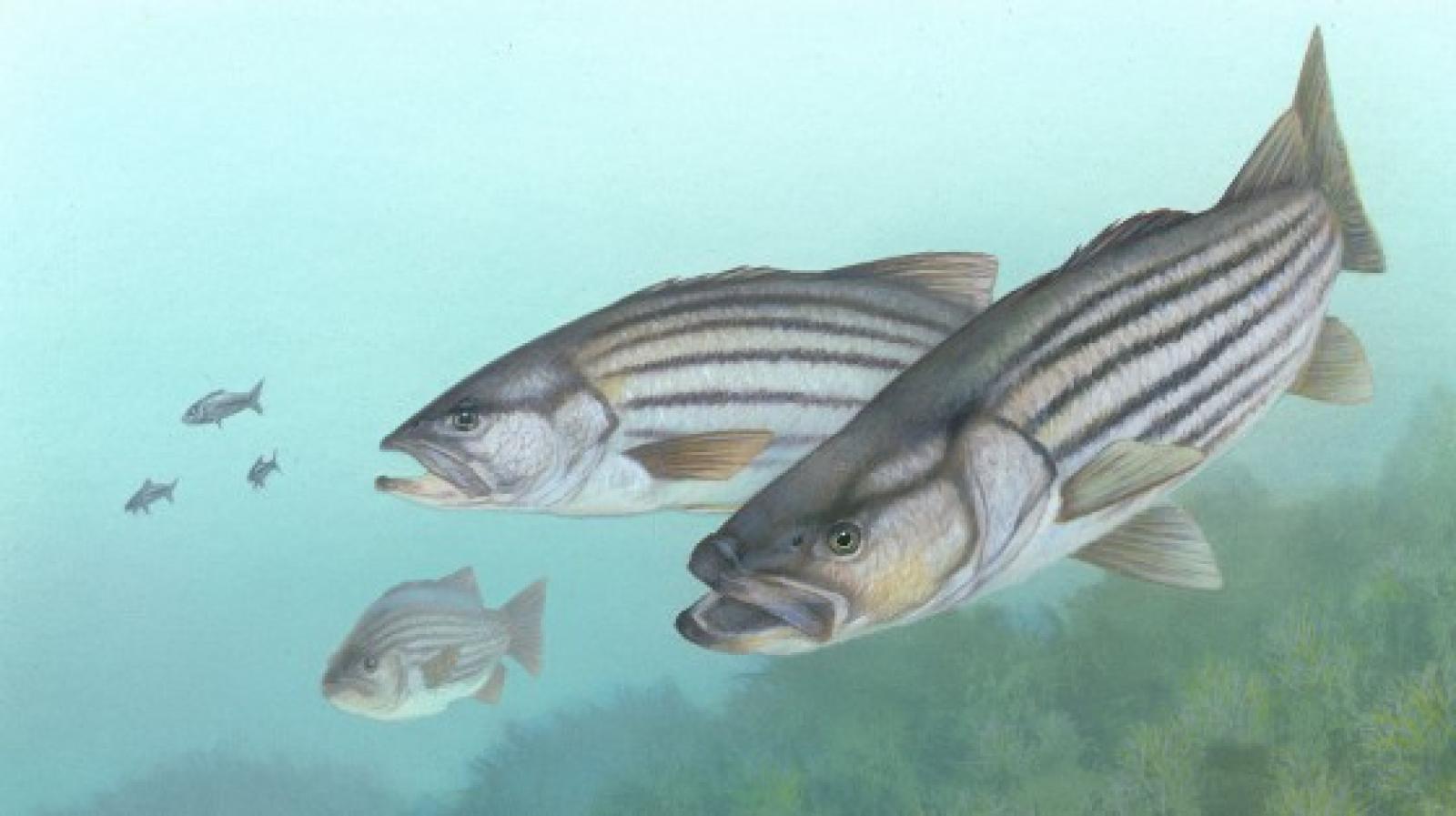Striped bass were scarce at this year’s derby, following a trend in recent years, but Vineyard fishermen may have reason for optimism after two major stock assessments have shown a record or near-record number of spawning fish in the Chesapeake Bay.
On Monday researchers from the Virginia Institute of Marine Science announced preliminary results from their annual young-of-the-year count, indicating the highest young-of-the-year count measured in the survey’s 40-year history. A day later the Maryland Department of Natural Resources announced that its young-of-the-year stock assessment revealed the fourth strongest spawning class in that survey’s 58-year history, with an average of 34.6 juvenile stripers per survey haul (compared with last year’s count of 5.9 fish and a survey average of 11.9).
Striped bass, known as rockfish in the mid-Atlantic states, spawn primarily in the Chesapeake in the spring and migrate as far north as the St. Lawrence River to feed before returning to the bay in the fall again to mate. It will take four years for this year’s young-of-the-year class to mature to a commercially harvestable size, and another four to six years before they will be large enough to be captured by recreational fishermen.
“We are extremely pleased to see this year’s results,” said Maryland department of natural resources biologist Eric Durell in a press statement. “It is interesting to note that the four largest year classes on record have occurred since the moratorium was lifted.”
Striped bass fishing in federal waters was banned by the National Oceanic and Atmospheric Administration in 1990 following two decades of near collapse before being reinstated in 1995.
News of this year’s bounty comes after years of renewed concern about the state of the popular sport fish and weeks before the Atlantic State Marine Fisheries Commission (ASMFC) is set to vote on a 40 per cent reduction in striped bass mortality proposed for 2012.
This spring the Massachusetts Division of Marine Fisheries acknowledged that from 2006 to 2010 the catch of small stripers dropped by nearly 75 per cent while the ASMFC cited a 66 per cent decline in the estimated recreational catch from 2006 to 2009.
Why the young-of-the-year stock is unexpectedly rebounding so sharply is not entirely understood. A press release from the Maryland department of natural resources says only: “Variation in annual spawning success is normal because striped bass reproduction is influenced by many factors including water temperature, winter snowfall, spring flow rates, and prevailing weather conditions.”
Brad Burns, president of the fishing advocacy group Stripers Forever, attributes the rebound to “serendipity” and is skeptical of the so-called good news.
“You have to temper it with a little reality,” he said yesterday. “That’s the first [big class] since 2003. We’ve had eight years of lousy spawning. If we had four or five years like that I’d have to swallow my pride and say what do I know, but for a long time there in the 1990s and early 2000s we were having those year classes back to back. That’s what’s giving us the large fish we’re fishing now and we’re seeing a big lack of smaller and medium-sized fish. My fear is that the ASMFC will knuckle under the pressure from commercial fishing interests.”
If the ASMFC does not reduce the catch limits next year, Mr. Burns fears that a combination of commercial harvesting and a persistent mycobaterial infection among striper stocks in the Chesepeake could prevent recreational fishermen from reaping the bounty of this year’s banner crop.
“We should still reduce the harvest as much as we can — a minimum of 50 per cent,” he said. “It’s certainly Stripers Forever’s position that striped bass should be a game fish. The species just cannot sustain a meaningful commercial fishery and a quality recreational fishery for the millions of members of the public that pursue it and it’s far more socioeconomically valuable as a resource for public fishing than it is for commercial fishing.”
Still, for a fish that has experienced such drastic changes of fortune in the past Mr. Burns welcomes word of its recovery, however tentative.
“It’s certainly good news for anyone who has any affection for striped bass,” he said.







Comments (2)
Comments
Comment policy »